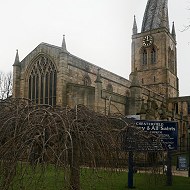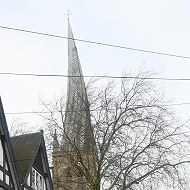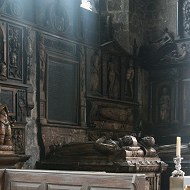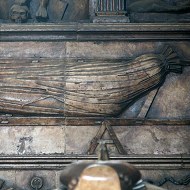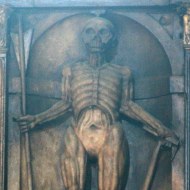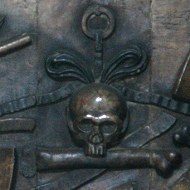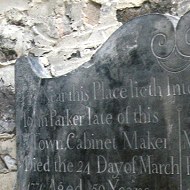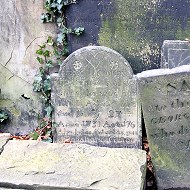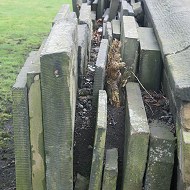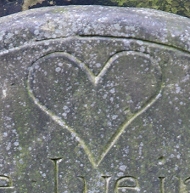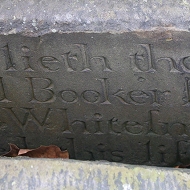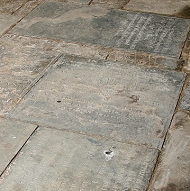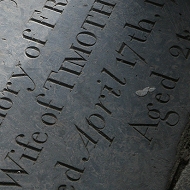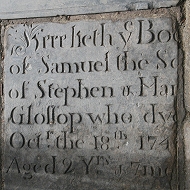Poor Frank Raw

Home | Why PoorFrankRaw? | Contact | Shop
St Mary and All Saints, Chesterfield, Derbyshire
20/02/2015: This church is rightfully famous for its remarkably twisted spire, leaning 9 feet to the south. Whichever direction you approach from, the spire catches the eye just because it is so very wrong. The church is also celebrated for the huge alabaster Foljambe monument, complete with (in relief) a shrouded body on a bier, a standing, partly decomposed memento mori cadaver and a lovely set of gravediggers tools and some bones. That's the good part. I'll get to the less good part shortly.
I apologise for the quality of the interior photos, I was having some camera issues that day, hence the horrible flare, and that corner of the church is not well lit. I'll go back soon to try to do better.
Tucked away in a slightly shabby corner (in the S transept I think) is a monument to John Parker, a local cabinet maker, and his family. I like to see craftsmen inside the church along with all the big nobs who usually crowd in through the door, leaving the rude mechanicals out in the cold.
All good so far and there is a lot to see inside, but outside, if you can take your eyes off the spire for a moment, is a different matter. Look at the churchyard. It is almost entirely cleared. In April 1922 the vicar had a chat with the 'Corporation' - Chesterfield council - and they took over responsibility for maintaining the churchyard. That means basically mowing the grass. But what of all these headstones cluttering up the place? Oh, we'll soon shift those...
Look around the edge of the churchyard and there are the headstones. Stacked eight deep against the wall, unreadable, breaking up, eroding through the damp between the layers and looking entirely un-cared for. And just to add insult to injury, when the church needed some paving, they took a few of the headstones, sawed them into pieces and made a nice floor for the porch. Remember, this is in Derbyshire. You can't throw a Bakewell tart around there without it landing in a quarry. It isn't as if good stone for paving was hard to get hold of. If I had a heart I could almost cry.
If you want to do anything to the inside of a listed church you have to get a faculty before you can do it. Nothing happens without due consideration of the historical value of the existing structure and the value and appropriateness of the alteration or addition proposed, and rightfully so. But the churchyard? That place full of historical documents? A place of meaning for local families?... Do what you like. Grrrrr. And while Chesterfield's graveyard was culturally vandalised in 1922 it still happens today.
The headstones seem to be a good and interesting collection of 18th and 19th century memorials, with potentially 17th century stones stacked out of sight and mouldering away. Among those visible I spotted a couple of love hearts and a stone for Edward Booker, a 'whitesmith'. A whitesmith is a tin worker. He may have worked in sheet tin or tin-plate, but may also have sometimes coated ironwork in tin which could then be polished to a bright finish. I wonder what other lost trades are stacked against the walls of this open, easily mowed lawn.
